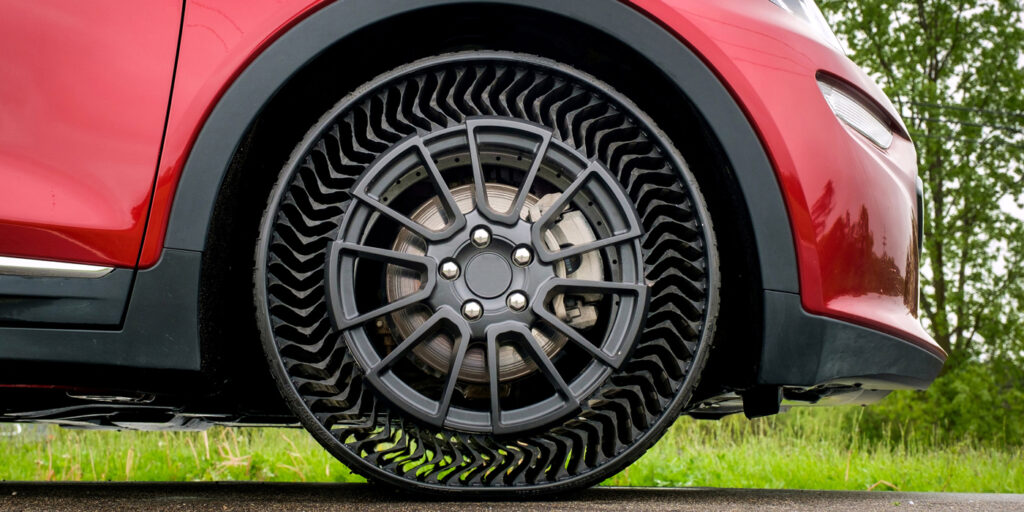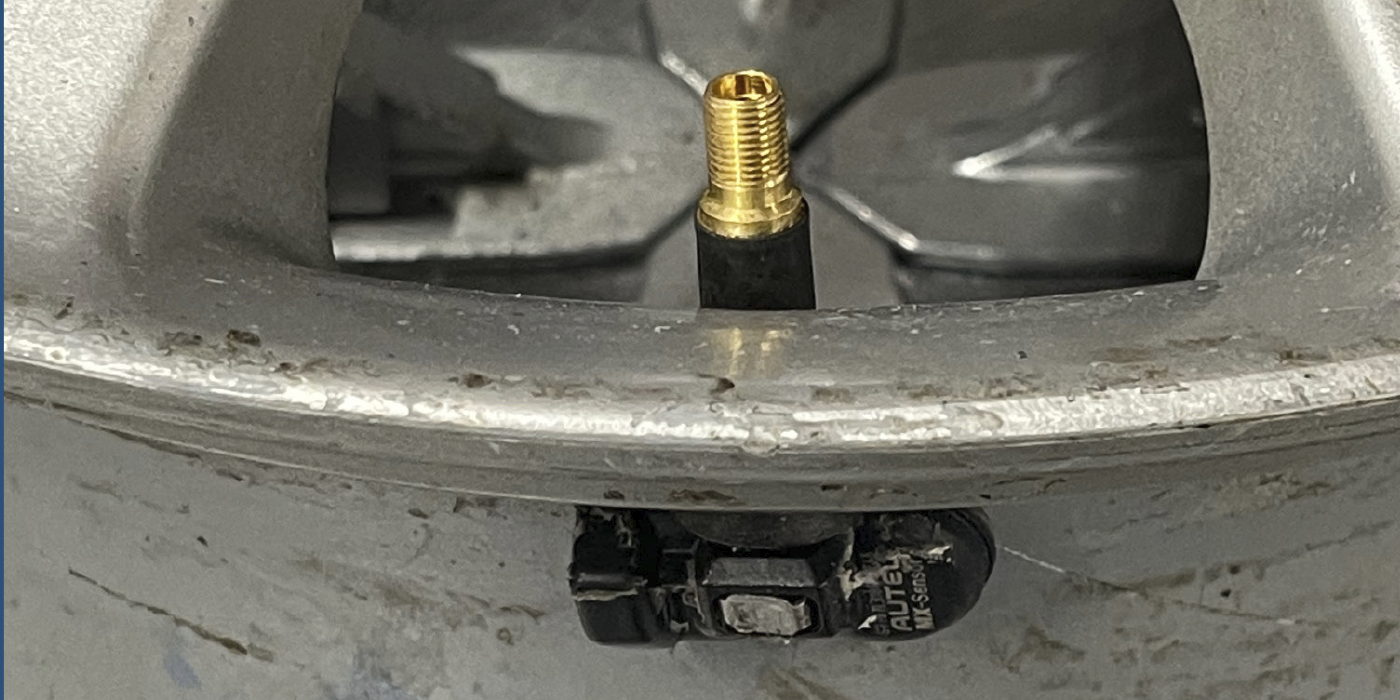The pneumatic tire has been around for more than 100 years and its success is linked to the proliferation of automobiles.
As the automobile evolved from a luxury item and a symbol of prosperity to a necessity in much of North America and the developing world, the need for tires has followed. Today’s tire market in North America is well over 200 million units per year. This demand stems from the vehicle market, but is also affected by the longevity of tires when in use. What typically determines the length of service is the tire’s tread life. For decades, the tire industry and its partners have worked to determine what to do with the remaining portions of the tire at the end of wear life. Historically, there have been three common options:
- Tires are discarded (landfills);
- Tires are burned (energy recovery);
- Tires are recycled (recovery of the material to make other tires or other products).
Today, the tire industry is evolving to focus on a holistic vision of tire sustainability. The goal is to see that whatever goes into a tire can be renewed or re-used, truly providing a sustainable offer.
This effort can be focused into four areas, or as we call them, the four “R’s” of the circular economy:
- Reduction in disposed tire mass;
- Sources of renewable materials;
- Reuse of components;
- Recycling of end-of-life tire mass, as well as materials from other sources.
The circular economy is the consideration of all aspects of a product, including its end of life. This is key when determining if an object, such as a tire, is sustainably produced.
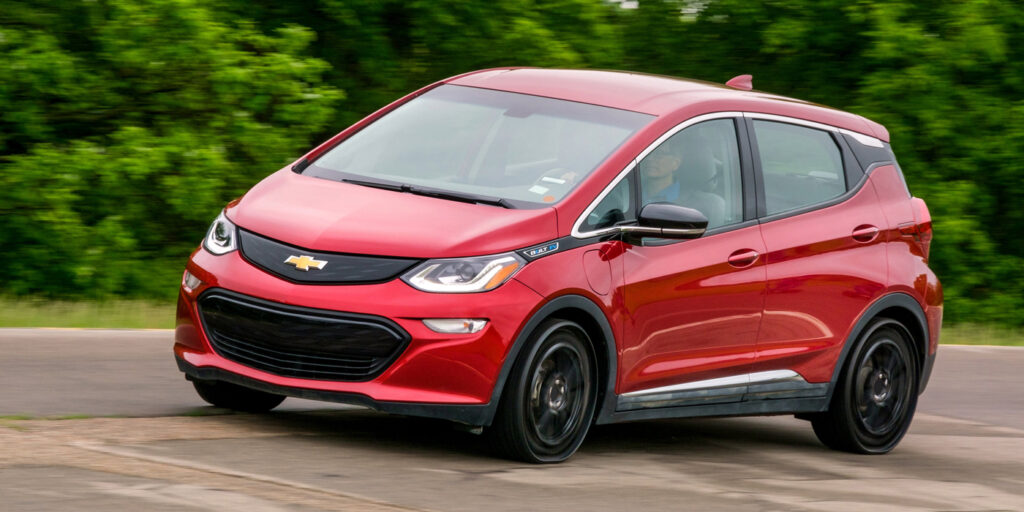
Developing Lighter, Longer-Lasting Tires
For passenger cars, tire manufacturers have focused on reducing tire mass, thus reducing the amount of material introduced into the cycle of sustainability. This can include producing tread compounds that are more resistant to wear, allowing for a reduction in tread mass, while still providing wear life that meets consumer expectations.
Another method is through a combination of material sciences and engineering to design and produce tires that can support additional load for the same-sized tire. Evidence of this can be seen with the introduction of high-load capacity tires (HLC). These tires are being introduced into the market in collaboration with vehicle manufacturers. They represent a new standard and a new level of engineering that allows a tire to increase its maximum load without increasing the maximum pressure or size. The first of these tires are present in Europe and are currently being introduced to the North American market.
Utilizing Renewable Raw Materials
In another pillar of sustainability, tires manufacturers will focus on using renewable biomass—organic material that comes from plants and animals. For example, rubber is a major component of tires and is often sourced naturally from rubber trees. Finding ways to recycle natural rubber and other renewable biomass will pave the way to using more sustainable raw materials in tire production.
Many tire manufacturers are active in the natural rubber agriculture and production industry, in addition to participating in scientific research. Their goals are to find new varieties of rubber trees and other means to increase yield, thus ensuring rubber production today, as well as protecting and enriching the natural rubber supply in the future. Tire manufacturers partner with rubber plantations to develop and put into place best practices in responsible, sustainable rubber production. In addition, manufacturers are developing rubber plantations to reverse deforestation by planting rubber trees in previously clear-cut areas.
In many cases, the industry is going even further, using oils from sources such as sunflowers and natural latex rubbers, such as green waste. Green waste, which is organic waste that comes from plants, can be used to make bio butadiene, a type of synthetic rubber used in tires. Members of the Global Platform for Sustainble Natural Rubber, an international organization comprised of tire manufacturers, carmakers, civil entities and natural rubber producers that aims improve the sustainability of the natural rubber value chain, are looking into these efforts.
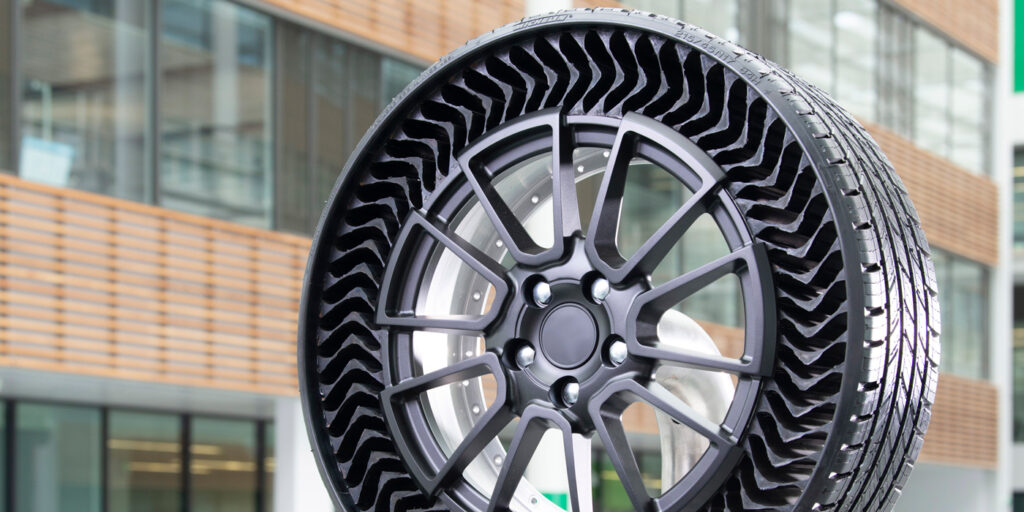
Recycling Components in Tires
Polystyrene, which is used to create foam, is a common material used in the packaging of goods for transportation, as well as for disposable food containers. Once used, this waste can be recycled into tires by mechanically breaking down the polystyrene into a powder. This powder is then heated until the molecular chains break down and polystyrene becomes styrene. From this point, butadiene, such as bio-butadiene, is added to create a sustainable synthetic rubber. With this technology, the equivalent of 80,000 tons of polystyrene waste could be recycled into tires each year.
Another source of common waste that can be recycled into tires is plastic. For example, PET plastic waste, which forms items such as water bottles, juice containers and cooking oil containers, can be recovered and broken down with enzymes into base monomers. Once chemically broken down, remaining components of the plastic from the bottles can be reformed into materials such as polymer reinforcements in tires. Because Michelin is researching this, I can tell you that close to four billion plastic bottles could be recycled into Michelin tires each year.
Tire recycling technology can be used in support of a circular, sustainable economy for the tire industry that will enable everything in an end-of-life tire to be recovered for reuse. Currently, Michelin plans for as much as 90% of recovered materials to be reused in a variety of rubber-based products, such as tires, conveyor belts and anti-vibration products. The remaining 10% will be reused directly by manufacturing plants to generate heat and power. With this technology, 56 million tires could be recycled each year to make new Michelin tires.
The Future of Sustainable Tires
For many medium-duty applications such as 18-wheel trucks and buses, a sustainable solution is retreading, or adding additional tread to reuse the remaining tire carcass. This can be economically advantageous and increase the overall useful life of a tire. In the future, reuse through retreading could become the standard in passenger cars, as well.
The future of tires is even more ambitious toward sustainability and mobility for all. Today, tires use the air pressure, compressed to the pressure of about 2.5 atmospheres or more, to provide the structure that supports the load of the vehicle it supports. In short, it is not the tire itself that supports the load, but rather the air trapped and compressed in the tire.
At Michelin, we believe the future lies in the introduction of airless tires, in which a structure made from sustainable materials supports the load. The hub and spoke stay the same, but the treads can then be changed out for later use or modified for different uses. When the tread reaches the end of life, it is recycled, and a new tread is attached. This provides the sustainable advantages of retreadable tires in an application for consumer vehicles.
The tires of tomorrow will also communicate with the vehicle and the user, providing information on the usage history of the tire, as well as road conditions. Tire manufacturers are introducing tires into the market equipped with RFID, or radio frequency identification. This is commonly a chip inserted into the tire sidewall which allows for each tire to be uniquely identified. RFID, coupled with information in separate secure databases, allows tire manufacturers and service providers to track the history of a tire. Research is also ongoing on using electronics in tires to further understand their usage conditions, including load conditions.
Further advances may allow tires to communicate road conditions. Combined with tire designs, vehicle control systems may be able to adapt driving styles to conditions. Imagine a tire and vehicle that know it’s raining and how deep the water is on the road, transmitted from sensors in the tire and vehicle. Based on this information, as well as known characteristics of the tread, the vehicle calculates the minimum stopping distance to be used by the automated braking systems. This system adapts again when it is snowing and even suggests the optimal tread design to consider for such conditions. Some of these features are becoming available in tires today; others will be available as research advances. The future of the tire industry is sustainable and adaptive. Tires will add more value for consumers, providing the assurance of a product engineered for the environment and for greater safety and choice in mobility.
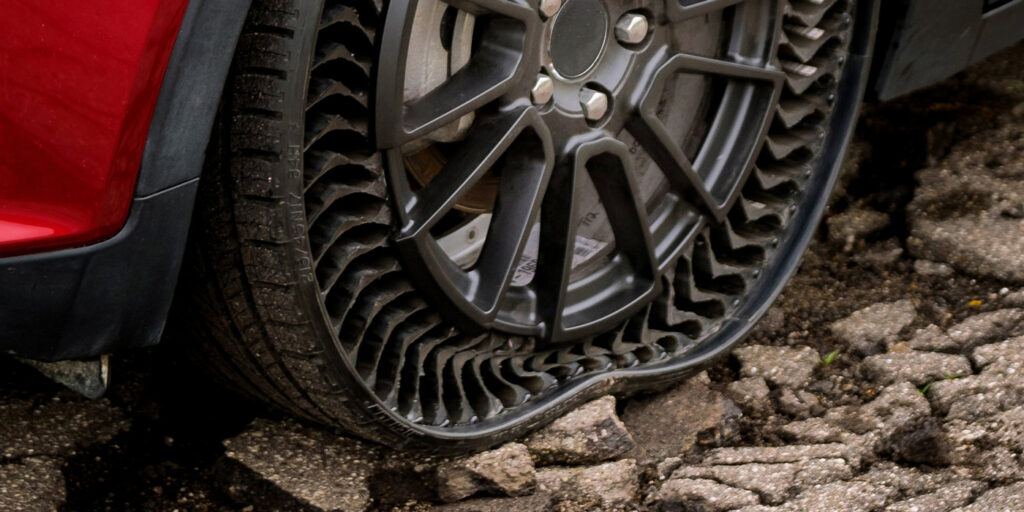
Airless Tire
Debuted at the 2019 Michelin Movin’On Summit, the Michelin Uptis is the company’s non-pneumatic or airless tire that will consist of two components.
One is a central spoke and hub system that will support the load of the vehicle. It will be made from sustainable materials, recycled and recyclable, specifically engineered for the vehicle to provide comfort and handling, comparable to pneumatic tires of today. The second component is a tread manufactured separately from the hub and spoke and then assembled. The treads will use 3-D printing technologies to provide tread designs adapted to the users’ needs.
When a drivers’ needs change due to seasons or usage, the treads can then be changed out for later use or even modified for different uses later. Additionally, when the tread reaches the end of life, the remaining portion is recycled, and new tread is attached. The overall spoke and hub remain. This provides the sustainable advantages of retreadable tires in an application for consumer vehicles.
For more information on the Global Platform for Sustainable Natural Rubber (GPSNR)’s efforts, go to www.sustainablenaturalrubber.org.

